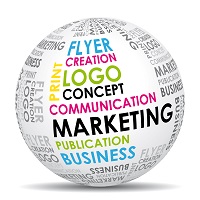The problem with advertising is that when all is said and done, no one has really asked for it - it's simply given to them. To then interrupt someone's life with an advertisement, you better make it good and memorable.
Imagine how many adverts the average person sees over the course of the day. Here are just a few:
- Print adverts in a newspaper or magazine
- TV and at the cinema
- Audio adverts on Spotify
- Radio and podcast adverts
- Pop-up ads and banners on website
- Billboards on the side of buildings, motorways and buses
- Posters and flyers handed out in the street
The point is, unless you live under a rock, there is simply no escape from advertising.
Consumers can quickly get tired of deals and promotions before they've even finished their morning coffee, so if you don't want to annoy them and give advertising a bad name, then you definitely need to think a bit harder about how to reach your target market.
In a way, users don't despise advertising per se, they just hate it when marketing is boring and completely irrelevant to their needs and interests. It's viewed especially negatively when it takes something away from what they really want, like watching a TV show, getting to a place without being inconvenienced, listening to music, or reading the news. So, how exactly are you supposed to not annoy consumers with advertising?
Advertise without it looking like a conventional advertisement
Sounds difficult, but it isn't actually. When you see something you enjoy and don't feel like it was pushed upon you, then it's a win-win for everyone. Influencer marketing is perhaps the most relevant field of advertising when it comes to seamlessly integrating a product or service within content, such as in a Tweet, Instagram post, or YouTube video. By now, consumers are starting to catch on to the methods regarding how they're being sold to, but influencer marketing still has a lot of potential and, when done right, yields positive results.
Another avenue to explore in this realm is guerrilla marketing. This is a bit more obvious than influencer marketing, but is often so much fun and unifying that consumers just go along with it. Often seen in the street or in bus and train stations, guerrilla marketing usually allows the consumer to use or to react to a certain type of advertising, whether it be a bus stop seat which provides your weight (Fitness First), a surfboard with a chunk bitten out (Discovery Channel documentary on sharks), beer glasses in place of door handles (Tyskie beer) or even a realistic painting of a car on a garage door (Audi), guerrilla marketing makes you think about the brand in a fun and positive way.
Let consumers think and be inspired
If we take flyers (or leaflets) as an example: How many of you will take one from someone giving them on the street and either pocket it without really looking, or glance at it and be quickly impassive by the bad design and the poor effort of promotion? In the end, putting in a lot of effort in terms of design and print material will really pay off, as you'll have something that you're proud of and that the consumer will actually want to look at. See here for examples many of which have bright, attractive colours, clear fonts and big headlines, as well as attractive backgrounds.
The design is one thing, but what you actually write on the flyer is another. Whilst plainly stating the message of the leaflet is usually preferred (Spring Sale, Recruiting Now, New Store Opening, etc.), you could also mix things up by being more elusive. For instance, one side of the flyer could say, "Feeling tired?" and the other could be a map and details of a new coffee shop. Another could say,
"Turn this over for a surprise" to reveal 10% off all purchases for a clothing store on the back of the flyer. Sometimes people like a bit of mystery. Just make sure the finished product actually looks good and printed on quality paper, like the type of leaflet printing you'll find at print24.
Make people laugh or excited
Finally, perhaps the best way to make sure your advertisement isn't annoying is to make it hugely funny or interesting. It doesn't have to be laugh-out-loud funny or make them think this is the best thing they've ever seen, it just needs to be entertaining enough that it doesn't seem bothersome. Everyone will likely remember the famous TV adverts like Budweiser's 'Whasassssup', Honda's 'The Cog' and Sony's 'Bouncing balls down the street', but billboard advertising can be just as memorable and funny.
Advertising doesn't need to get in people's way, it simply needs to be great enough that they actually welcome the distraction, rather than be frustrated by it.






